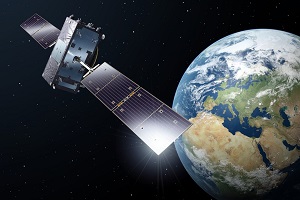Legacy equipment is vital to the functioning of many manufacturing facilities. Nevertheless, with rapid advances in automated and connected technologies, managing both new and old equipment simultaneously can be a challenging balancing act. Here Johan Jonzon, CMO and co-founder specialist in edge analytics for the Industrial Internet of Things (IIoT), Crosser, shares some insights into how manufacturers can successfully manage data from both new and legacy equipment.
It’s common for industrial facilities to contain both new, digitalised equipment and legacy equipment that has not been designed with connectivity in mind, other than maybe to the local control room or local dashboard for the operator. Afterall, plant managers are unlikely to dedicate funds to upgrading to the latest model when a piece of legacy equipment is running with no problems.
Therefore, it’s normal for businesses to only invest in the new pieces of technology that are needed, finding ways to integrate them into the existing system. In addition, as businesses expand, it’s common for them to acquire new sites. Having a mix of old and new sites can add even more complexity into the mix, making it very difficult to streamline and unify data from all the different locations and pieces of equipment.
Retrofit IIoT devices
While legacy equipment may have been manufactured before the rise of IIoT, it can be given similar capabilities by retrofitting. This is also known as ‘wrap-and-extend’, where the device ‘wraps’ the piece of equipment with functionality and connectivity, therefore extending its reach in a number of ways. By updating the piece of equipment and increasing its functionality, the manufacturer also extends its life. This is because the machine can fulfil the company’s production requirements for a longer period of time before an upgraded replacement is needed.
To gather data on equipment performance, sensors that measure vibration, temperature, or other parameters can be installed. Devices that are retrofitted onto legacy equipment can include Open Platform Communication (OPC) servers, IoT platforms and IoT gateways, which enable communication between new and legacy equipment.
Embrace the edge
Giving legacy equipment the ability to collect data offers one solution, but managing that data and attaching meaning is where the next challenge lies. We must first consider that a network comprised of many pieces of new and legacy equipment creates a massive amount of data. The bandwidth necessary to transmit that data to the cloud for storage and analysis can be expensive. This can be mitigated by edge analytics, which can act as a bridge between devices and the cloud, providing a local source of processing and storage.
Edge analytics can collect and filter data, storing or sending it to the correct location based on business rules. This means only the necessary data is sent from the edge to on-premise systems, such as a manufacturing execution system (MES) or enterprise resource planning (ERP). Data-reduction offloads the on-premise systems and reduces the amount of data that is transferred to the Cloud, saving Cloud and bandwidth costs.
Edge analytics is also capable of conducting down-sampling and summary analytics, which can further reduce the size of the data that must be sent to other areas on-premise. Machine data can be transformed by edge technologies into a common language that is understood by all equipment and devices in the facility, ensuring smooth communication.
However, handling a number of devices, a large amount of data, and a variety of different software and systems can soon become incredibly complex. In an area that can cause a cloud of confusion, it’s important to work with a solution provider that can simplify implementation and management of IIoT devices.
Strive for simplicity
The Crosser low-code platform for streaming analytics, automation and integration for the IIoT was designed with simplicity in mind. Crosser’s Flow Studio, which is part of the platform, makes system programming easy for employees. The Flow Studio consists of a number of pre-built modules that can be dragged and dropped to easily construct data flows without any formal training or coding knowledge required.
The combination of modules created can be tested in a ‘sandbox node’ or on a live edge node before widespread distribution. Once satisfied with the data flow, it can be deployed across an unlimited number of edge nodes in one single operation. The Flow Studio is designed to empower collaboration between users, such as automation engineers, IT teams and data scientists, and is developed to be simple and intuitive to use.
IIoT devices are on the rise, but that doesn’t mean old equipment is being left behind. Many facilities rely on a mix of new and legacy equipment, and these systems must be managed effectively to ensure seamless communication and complementary operation. Companies can make the most of a diverse system by retrofitting IIoT devices onto legacy equipment, and using a simple edge analytics platform to process and store all of the data collected.
The author is Johan Jonzon, CMO and co-founder of Crosser.
Comment on this article below or via Twitter: @IoTNow_OR @jcIoTnow










